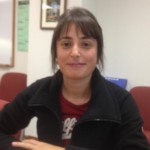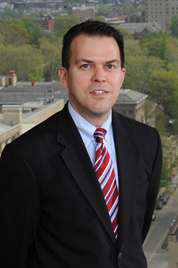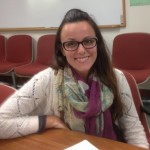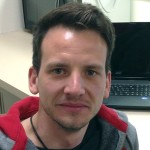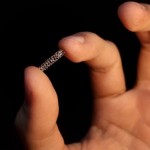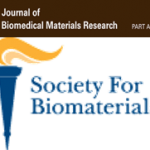Dilek presented a poster DFT Simulation of Colemanite Surface coauthored by J.W. Drelich, O. Ozdemir, M.S. Celik, and G.M. Odegard during the NSF IUCRC Annual Review of Projects and Industrial Advisory Board Meeting, Center for Novel High Voltage/Temperature Materials and Structures – at Michigan Technological University, on May 19-20, 2015.
Jacob graduates
Jacob Braykovich returned to us this year and helped us in the project on bioabsorbable stent materials. He has just completed his B.S. program and is moving to real world. He will work for Ford. We wish him successful career and would like to express our appreciation for all contributions he made to our research programs. Good luck Jacob!
Visitor
Prof. William R. Wagner, Director of the McGowan Institute for Regenerative Medicine, Professor of Surgery, Bioengineering and Chemical Engineering at the University of Pittsburgh, and the Editor-in-Chief of one of the leading biomaterials journals, Acta Biomaterialia, visited us on April 27-29. His seminar on Biomaterial Design to Interrupt Pathological Tissue Remodeling Processes was well received by the faculty and graduate students of both Materials Science and Engineering and Biomedical Engineering Departments. Our Surface Innovations team also benefited from a discussion on biodegradable zinc-based stent materials with the visitor.
SURE Scholarship
Congratulations to Sara Schellbach who won the SURE Scholarship from the Wayne State University. This summer undergraduate research experience offered by the School of Medicine to US citizens with GPA >3.0 was very competitive and among more than 100 applicants only ~25% were awarded with the SURE Scholarship.
Sara will work under the supervision of Dr. Carolyn Harris at Children’s Hospital. Dr. Harris is head of the new Hydrocephalus laboratory at Children’s Hospital and is currently working on ways to improve coatings of the shunts for Hydrocephalus patients. During the summer, Sara will use her skills in scanning electron microscopy, contact angle measurements and other surface/coating characterization methods to explore the causes for shunts’ coatings failures.
Poster Presentations
Shan attended recently the 80th Annual Meeting for the Society for American Archeology in San Francisco, California (April 15-19, 2015). She traveled together with Prof. Timothy Scarlett, our collaborator from the Department of Social Sciences, and presented a poster on Revised Drying Conditions in Rehydroxylation (RHX) Technique for Dating Ceramic Artifacts. Prof. Scarlett presented the second poster on Multi-Lab Collaborative Experiments with RHX Dating. Both posters summarize our recent research activities and findings in the project on rehydroxylation method in dating clay-based ceramic artifacts funded by the US National Science Foundation.
Good-bye to Dr. Seitz
Dr. Jan-Marten Seitz has completed his one-year postdoctoral fellow program at Michigan Tech and is going back to Germany to start a new job, after his traveling across US with his wife. We are thankful to Dr. Seitz for his numerous strong contributions to our program on bioadsorbable medical materials. He elevated manufacturing of wires and stents to a new level, and helped us to establish several new collaborations in manufacturing industry and with research institutions in Germany. Dr. Seitz also designed and constructed new laboratory tools for handling and testing stents, which are detrimental to the success in upcoming testing of prototype stents. We also expect to commence a new research direction on bioabsorbable medical clips and sutures as the result of Dr. Seitz’ effort who summarized nicely previous research efforts in this area and proposed new directions.
Dr. Seitz will continue his involvement with our team in years to come and we expect that this fruitful collaboration will conclude with new joint inventions and publications.
NIH Funding
Surface Innovations research team just got awarded with a two-year grant by the NIH – National Institute of Biomedical Imaging and Bioengineering. We will study the effects of surface finishing of biodegradable Zn alloys on their biocompatibility and biodegradation rate. The project is a collaborative effort between SURFI team and research team led by Prof. Goldman from Biomedical Engineering. Prof. Martin Bocks from the University of Michigan will assist the Michigan Tech researchers in this project with his clinical expertise.
Prof. Drelich would like to acknowledge Prof. Goldman, Prof. Bocks and Patrick Bowen for their strong contributions to the successful proposal that led to this funding.
Visit in China
Dr. Drelich was recently invited by Prof. Yuehua Hu to the Central South University in Changsha (China) and spent there one week at the beginning of December. He delivered three seminars on topics related to wetting phenomena on rough surfaces, mineral surface charges, and antibacterial vermiculite. This visit provided an opportunity for interactions with faculty and staff of the School of Natural Resources and Mining. Incredible hospitality of Chinese hosts, combined with tasty spicy food of Hunan province made great impression on Dr. Drelich.
Additionally, Dr. Drelich visited several historical places including 1300-years old Phoenix Ancient Town (中国湖南省湘西自治州凤凰古城) in Xiangxi Autonomous Prefecture of Hunan province. This visit to China has concluded with a new research collaboration between the Surface Innovations research team and the Central South University in the area of surface chemistry of minerals and mineral processing.
Publication from collaboration with Brazil
In August 2014, Dr. Drelich visited the Military Institute of Engineering (MIE) in Rio de Janeiro (Brazil) and established a research collaboration with this institute in the area of natural fibers, composite materials, diamonds and alloys. The first paper entitled Unlocking Function of Aramid Fibers in Multilayered Ballistic Armor and published in Metallurgical and Materials Transactions A (Vol. 46A, No. 1, 2015, pp. 37-40) is the result of this MIE – MTU collaboration. In this report, prepared by researchers from MIE and co-authored by Dr. Drelich, it is shown for the first time that, in addition to already reported fabric rupture, debonding, and stretching, a massive incrustation of ceramic fragments onto the fabric fibers is responsible for the high ballistic performance of the multilayered armor system component.
New Publication on Biodegradation of Mg
In our new study on bioabsobable implants, just published in the Journal of Biomedical Materials Research A (Vol. 102, Issue 3, pp. 341-349), we present an in vitro – in vivo biocorrosion correlation for pure magnesium. The studies rely on experimental corrosion rates in the murine artery and in DMEM immersion testing. This is, as far as we know, the first correlation of this kind. Understanding of the in vitro – in vivo biocorrosion correlation for biodegradable materials could reduce the number of animal studies in a future. Predictions of in vivo stent biodegradation is thus highly significant and innovative. The studies described in the paper were led by Patrick Bowen.
